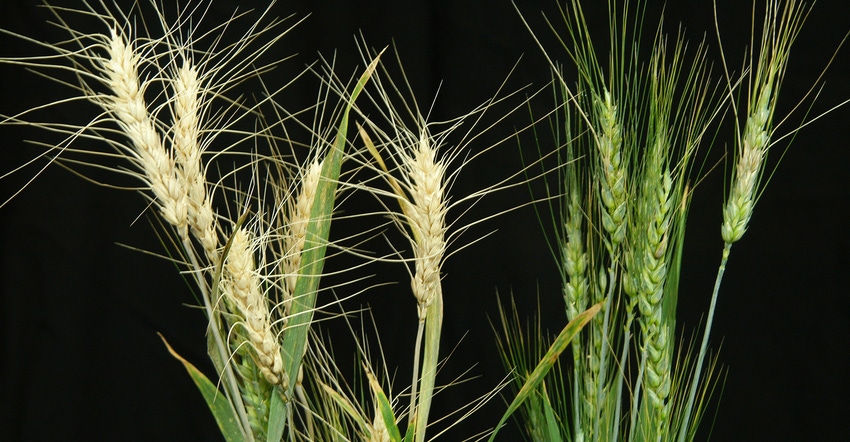April 28, 2020

Call it what you will, fusarium head blight, head scab, or perhaps some favorite four-letter word, but finding it in your wheat field is not a good thing in today’s market. It’s a tough-to-beat, yield-cutting disease no wheat producer wants to see — but there may be hope ahead.
Scientists from USDA’s Agricultural Research Service and their colleagues found a gene that can be used to develop wheat varieties more resistant to FHB. The news comes from a paper reporting the discovery and cloning of the gene known as Fhb7, which was published recently in the journal Science. The study was led by scientists at the Shandong Agricultural University in Shandong, China; and co-authors include ARS researchers Guihua Bai and Lanfei Zhao in Manhattan, Kan., and Steven Xu in Fargo, N.D.
In announcing the find, an ARS release called the discovery “a major advance in addressing a significant threat to the world’s wheat supply.”
FHB, or scab, is caused by the fungal pathogen Fusarium graminearum and results in yield losses in the United States, China, Canada, Europe and other countries. The disease also attacks barley and oats.
When the disease grows unchecked in grains, it releases mycotoxins that can induce vomiting in humans. It can cause weight loss in livestock when they refuse to eat the grains. The incidence and severity of disease outbreaks could also be exacerbated by climate change and varying weather conditions, ARS asserts. The agency also notes the rising number of acres in corn and no-till farming use is increasing the prevalence of the pathogen in fields. Growers often must use fungicides to reduce FHB damage.
The gene at work
The gene researchers found reduces FHB by detoxifying the mycotoxins secreted by the pathogen. It also confers resistance to crown rot, a wheat disease caused by a related pathogen.
The gene was originally identified in Thinopyrum wheatgrass, a wild relative to wheat that has been used to develop varieties with beneficial traits, including rust resistance and drought tolerance. They cloned the gene and introduced it into seven wheat cultivars with different genetic profiles to study its effects on plants grown under field conditions. Researchers found the gene not only conferred resistance to scab, but also had no negative impacts on yield or other significant traits.
Researchers note the study sheds new light on the molecular mechanisms that can make wheat, barley and oats resistant to the pathogen. New varieties with better FHB resistance using the Fhb7 gene are expected to be available in a few years.
Source: USDA ARS, which is solely responsible for the information provided and is wholly owned by the source. Informa Business Media and all its subsidiaries are not responsible for any of the content contained in this information asset.
You May Also Like




